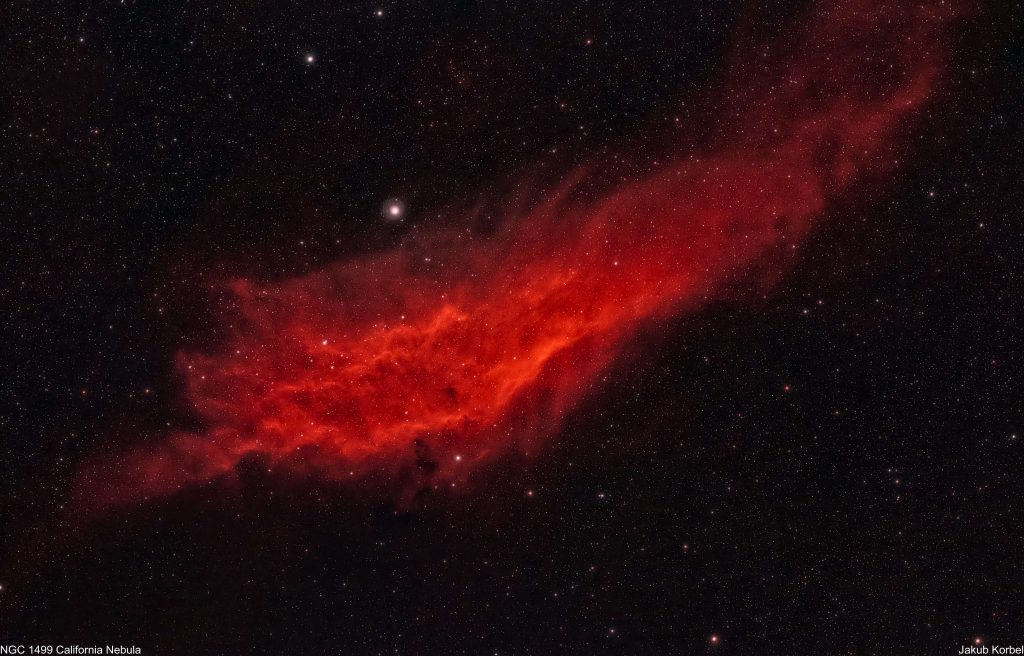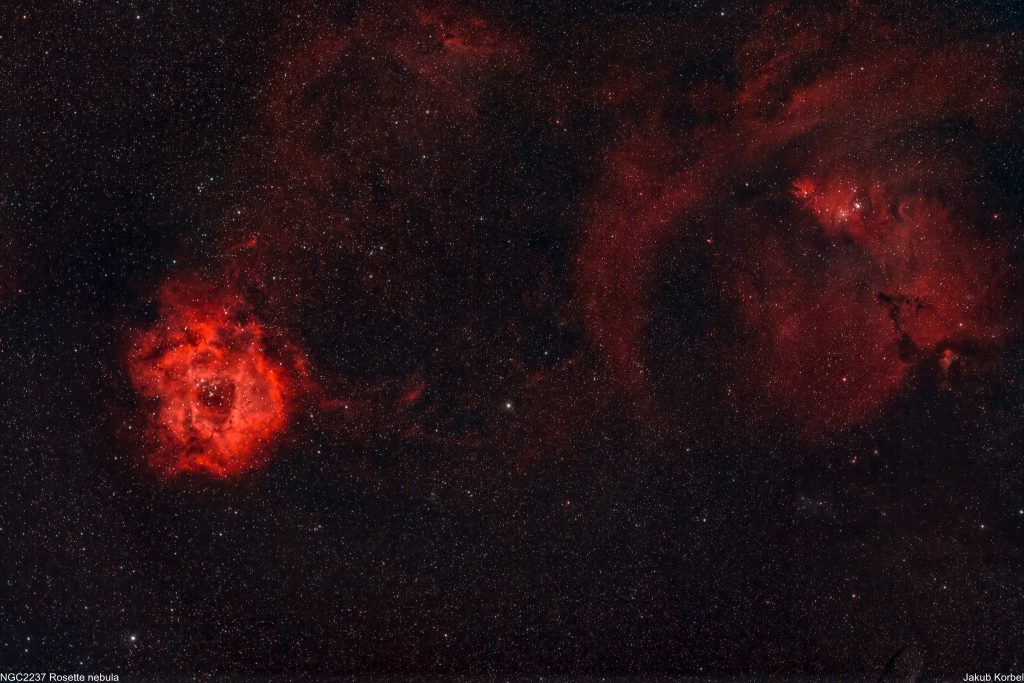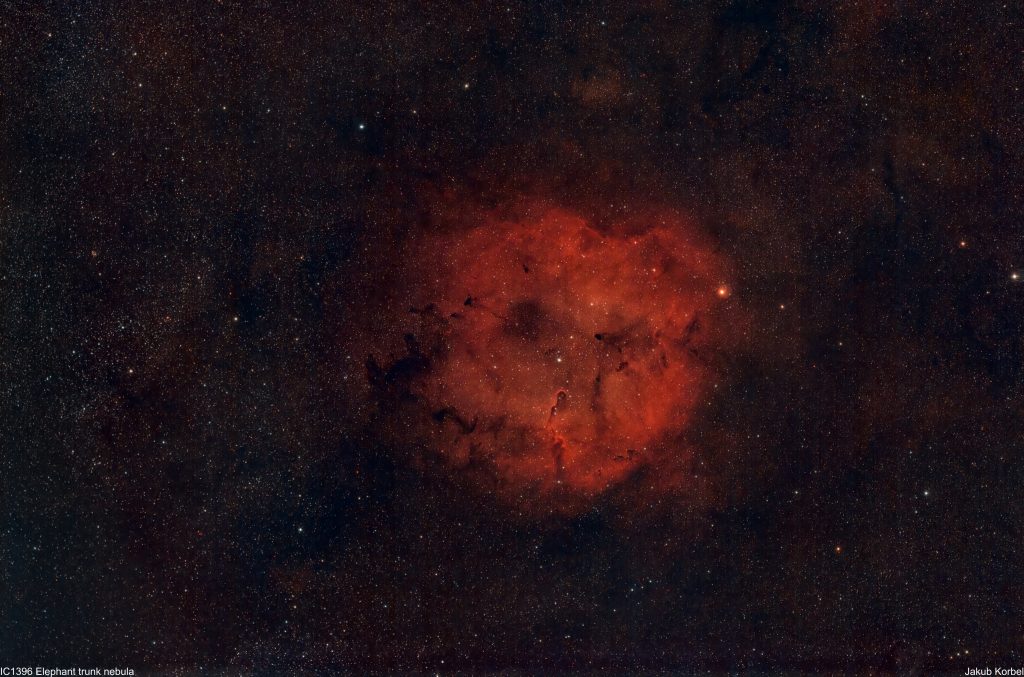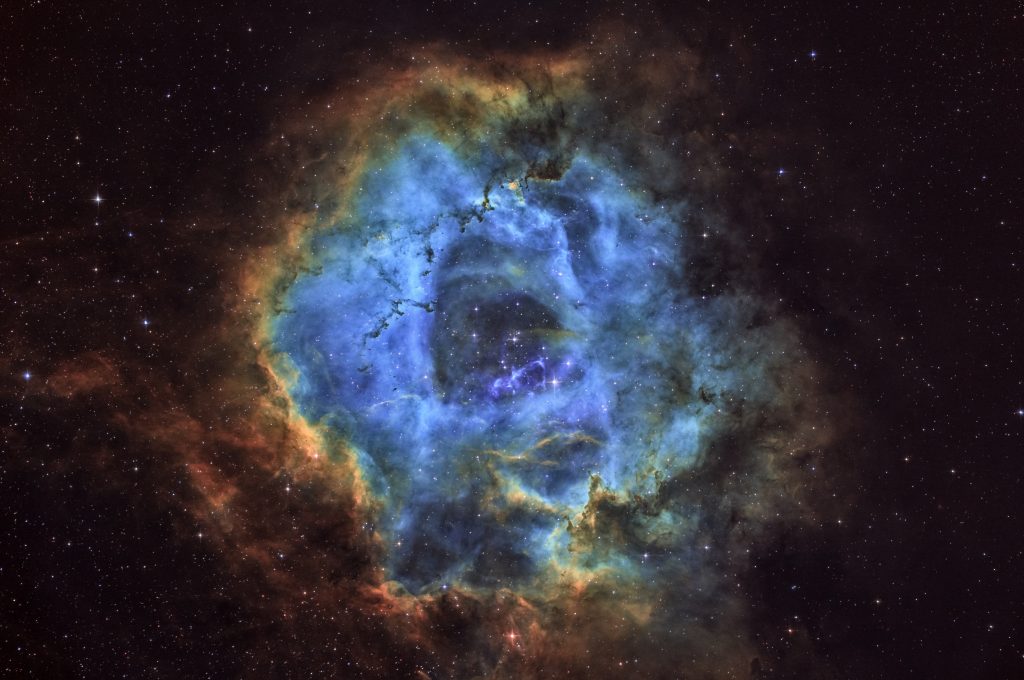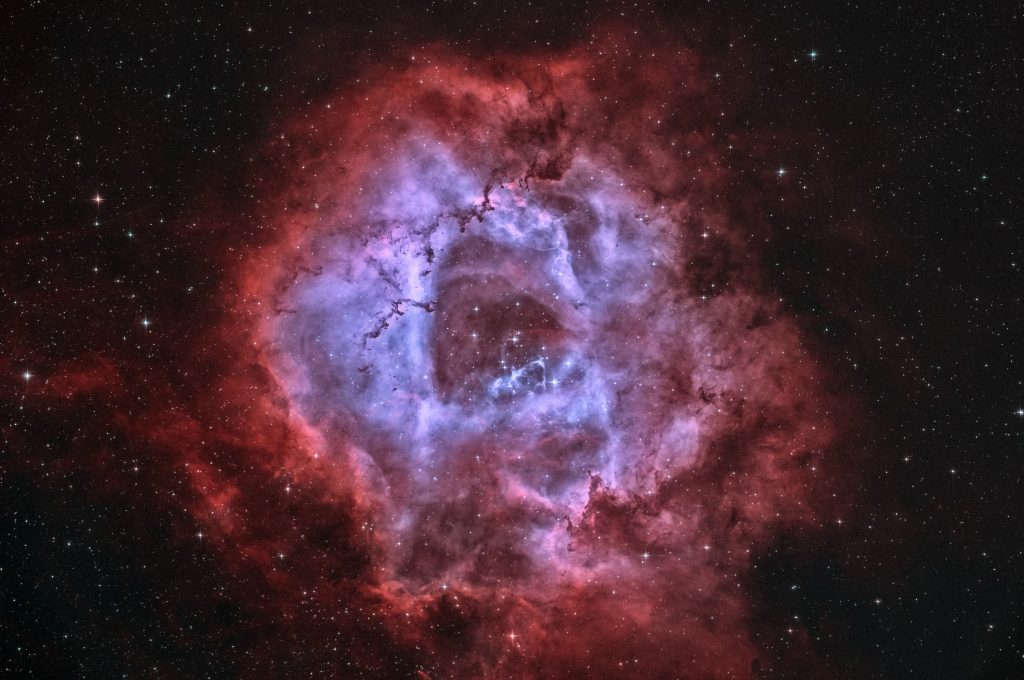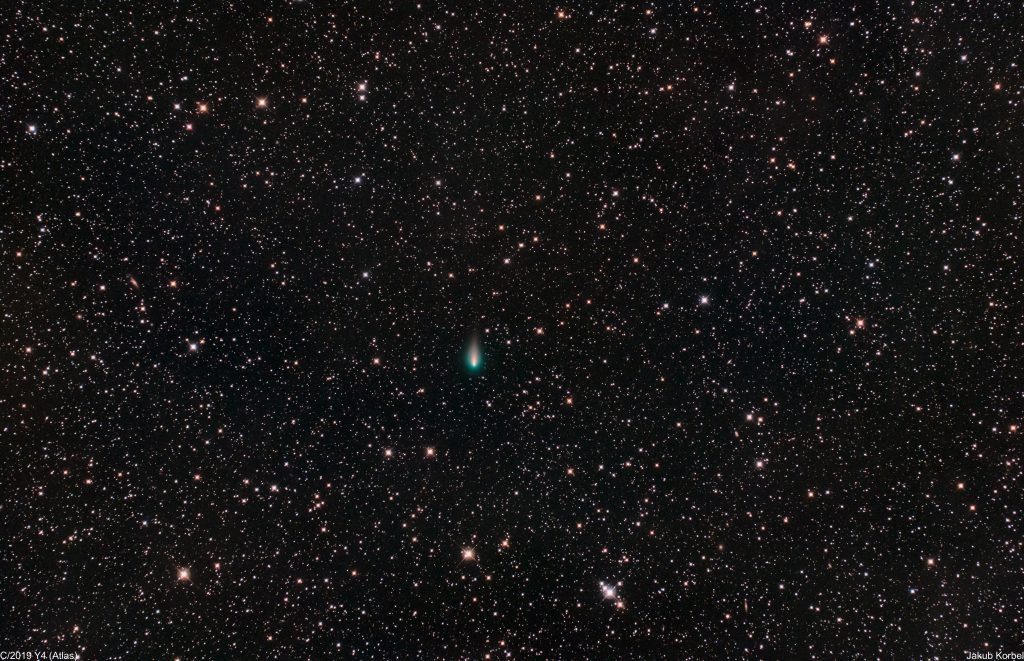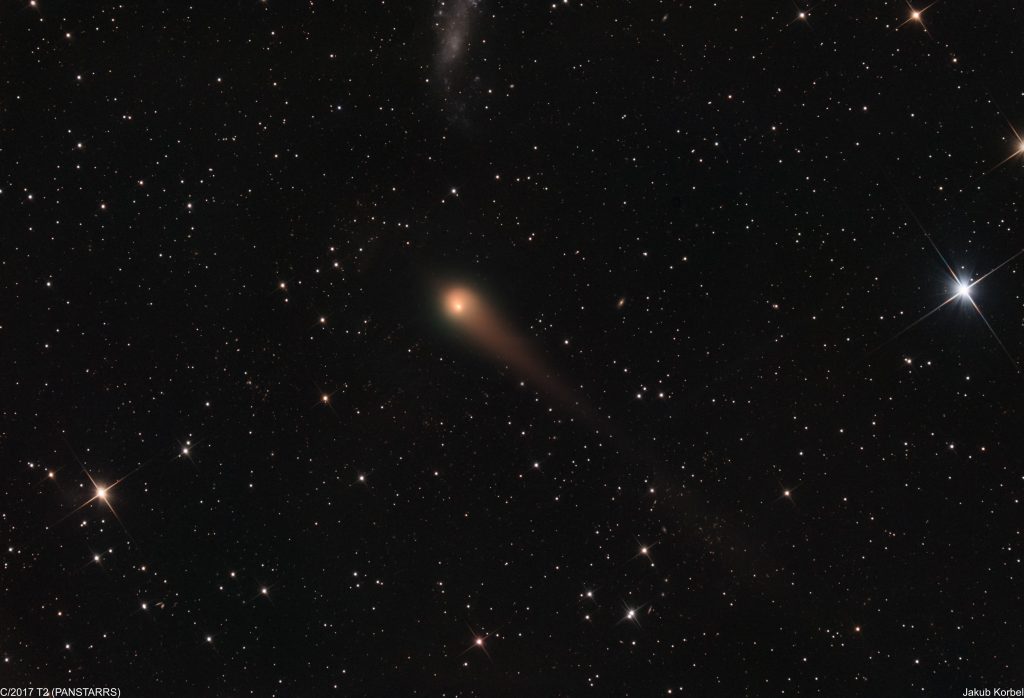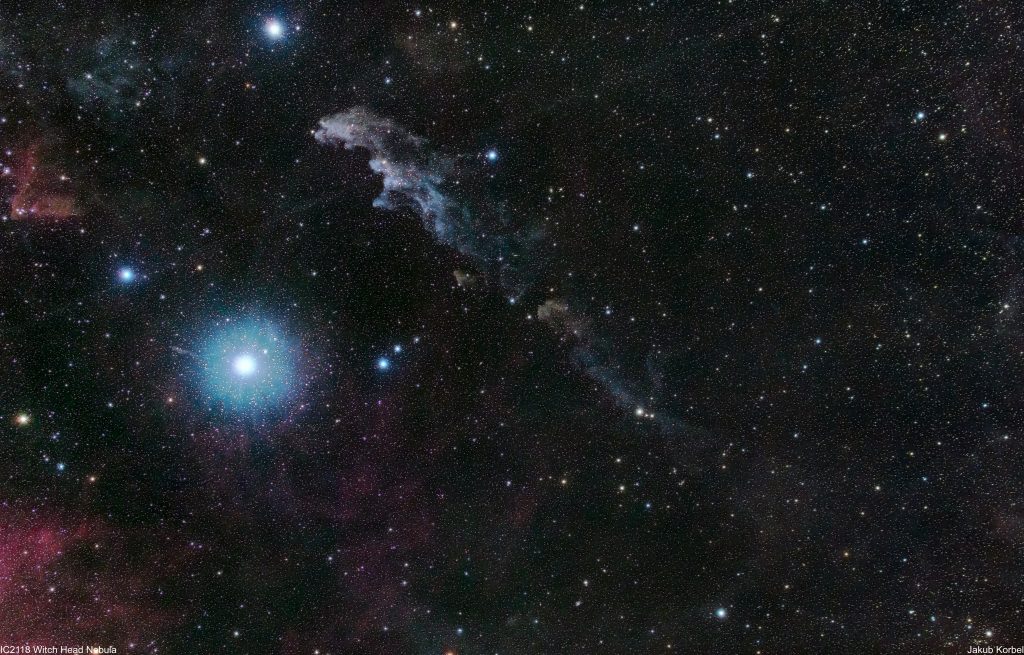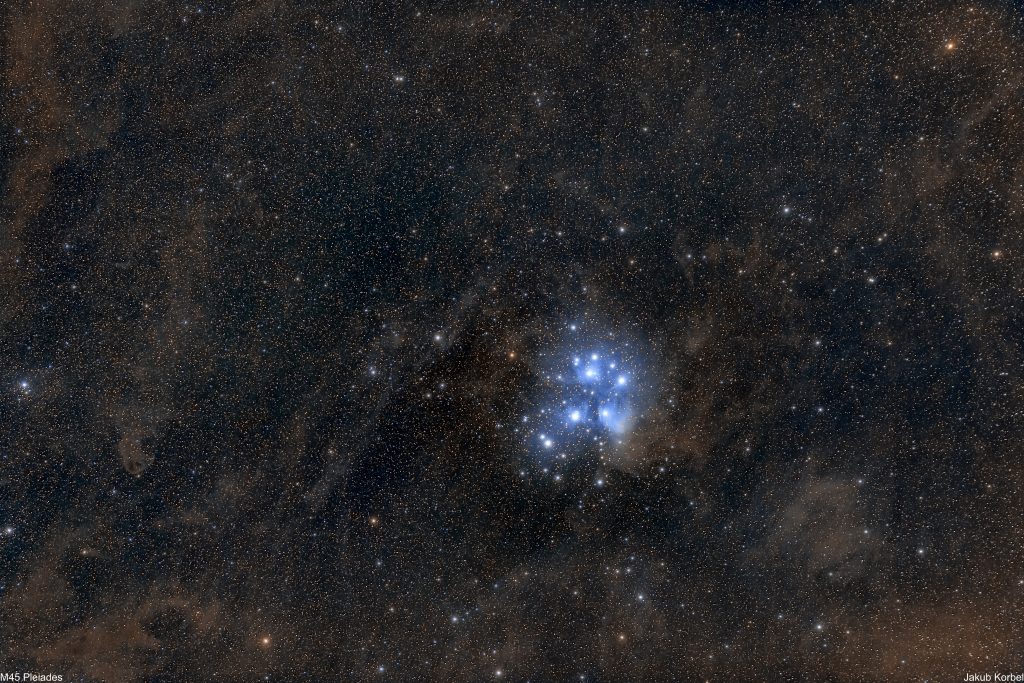I am not a huge fan of birding, but I captured this “Seagull” with pleasure. Initially, I noticed on my wide-angle photo, that there is a giant nebula north of Sirius. I checked in Stellarium what would be the optimal focal length and found out that this is a perfect target for William Optics RedCat combined with an APS-C sensor. Moreover, I was able to fit the M50 open cluster into the field of view (on the left side).
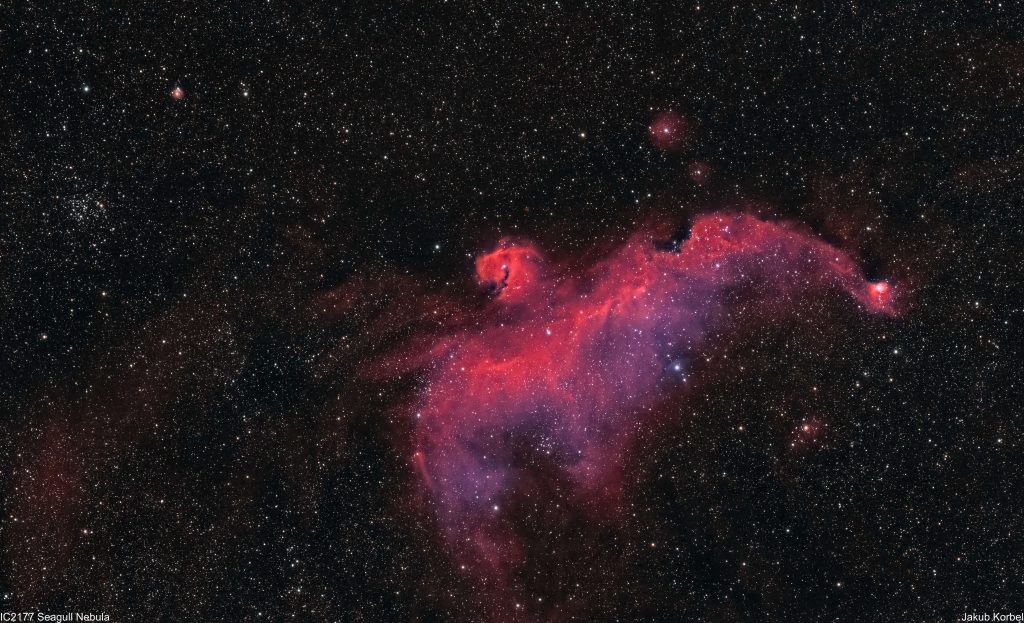
| Telescope | William Optics RedCat 51/250 f4.9 |
| Aperture | 51 mm |
| Focal length | 250 mm |
| Mount | Rainbow Astro RST 135 |
| Autoguiding | ZWO 178MM, QHY Mini Guide Scope 30/130 mm |
| Camera | ZWO 071 Pro @-10°C |
| Corrector | no |
| Filters | Optolong L-eXtreme 2" |
| Exposure | 85x180s, gain 95 |
| Date | 2022-01-23 |

